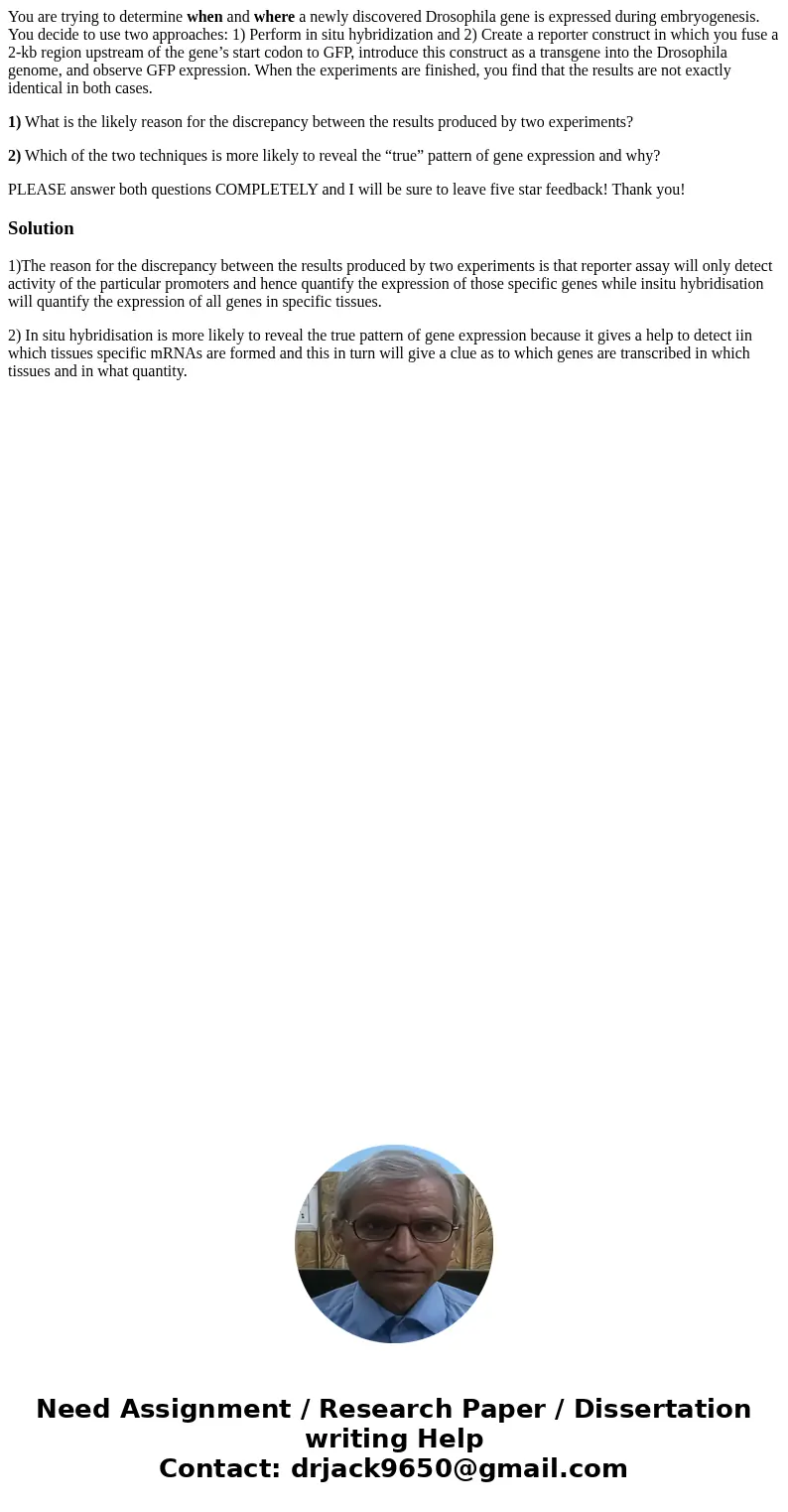You are trying to determine when and where a newly discovere
You are trying to determine when and where a newly discovered Drosophila gene is expressed during embryogenesis. You decide to use two approaches: 1) Perform in situ hybridization and 2) Create a reporter construct in which you fuse a 2-kb region upstream of the gene’s start codon to GFP, introduce this construct as a transgene into the Drosophila genome, and observe GFP expression. When the experiments are finished, you find that the results are not exactly identical in both cases.
1) What is the likely reason for the discrepancy between the results produced by two experiments?
2) Which of the two techniques is more likely to reveal the “true” pattern of gene expression and why?
PLEASE answer both questions COMPLETELY and I will be sure to leave five star feedback! Thank you!
Solution
1)The reason for the discrepancy between the results produced by two experiments is that reporter assay will only detect activity of the particular promoters and hence quantify the expression of those specific genes while insitu hybridisation will quantify the expression of all genes in specific tissues.
2) In situ hybridisation is more likely to reveal the true pattern of gene expression because it gives a help to detect iin which tissues specific mRNAs are formed and this in turn will give a clue as to which genes are transcribed in which tissues and in what quantity.

 Homework Sourse
Homework Sourse